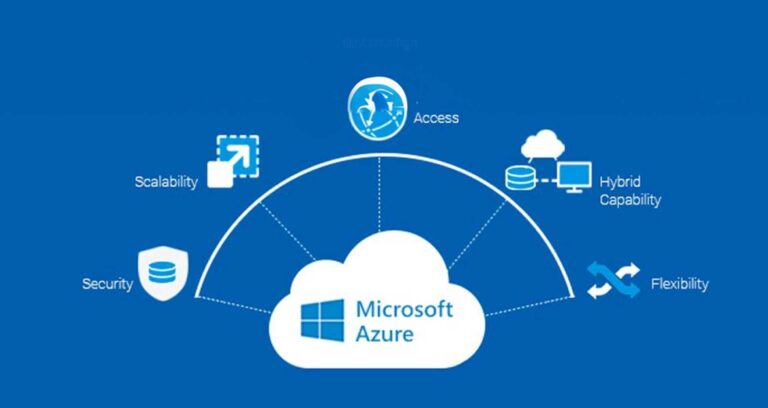
When you are just starting your business, you want to do everything right from the beginning and that’s an excellent approach. All operations your business is going to have, need a plan. Cloud operations aren’t an exception.
Why Startups Need a Cloud Strategy
Most businesses use the cloud. That’s just what today’s reality is. And if your business is likewise planning to use it, it’s best to have a structured strategy:
- With a plan, you will pay as little as possible.
- You’ll be able to scale (which should be problematic without a strategy).
- You’ll be responsive to market changes.
How to Build a Cloud Strategy: 5 Steps
- Turn to a Cloud Consulting Service
The first step is to consult with cloud professionals. They will help to
- assess the current (or planned) infrastructure
- identify your specific needs
- recommend cloud based IT solutions for your needs
- make a plan (and even help with its implementation).
Cloud consulting professionals will, among all else, help you choose between single-cloud and multi-cloud strategies. Here’s how the two compare:
| Single cloud | Multi-cloud |
| Simpler Management: Easier to handle as all resources are centralized within one provider. | More Flexibility: You can choose different providers for different needs. |
| Cheaper: One provider usually offers discounts and better deals for bundled services. | Better Resilience: You are better protected from downtime or service failures. |
| Riskier: Relying on one provider increases risks of outages and vendor lock-in. | More Complex: Requires better management, security, and integration. |
| Concerns with Resilience: A single point of failure is never safe. | Requires Extra Security Measures: This adds complexity but increases protection against data loss, too. |
- Choose the Right Deployment Model
The cloud deployment model dictates how your services will be hosted and managed.
Public Cloud
Private clouds are provided by third-party vendors like AWS, Google Cloud, and Microsoft Azure. They are ideal for startups since they are affordable and scalable. You pay for the resources you use and don’t manage the infrastructure.
- scalability
- cost-effective
- requires less infrastructure investment
- data security risks.
Private Cloud
This option gives you more control and security because the cloud infrastructure is used exclusively by your business. However, it’s more expensive and requires more in-house expertise to manage.
- full control over infrastructure and data
- requires significant investment
- requires ongoing management
- best suited for dealing with sensitive data
- good for businesses subject to regulatory requirements.
Hybrid Cloud
This one is a combination of public and private clouds. You can keep sensitive data on a private cloud and use the public cloud for non-critical workloads.
To select the right model, assess your startup’s
- security requirements
- budget
- scalability needs.
Startups with sensitive data or regulatory compliance needs may lean toward private or hybrid solutions. Those that focus on rapid growth and cost efficiency may opt for public clouds.
Consider the nature of your startup’s data. Think about its long-term goals. These two aspects will help you decide.
- Plan Costs
Then, there’s cost planning. Here are a few tips for it:
- How to set a budget: Estimate costs based on storage, data transfer, and computing power. Factor in scalability and potential surges in usage.
- How to monitor spending: Cloud providers offer tools to track and optimize spending (ask cloud consulting professionals to help with that if necessary). Use these to identify areas where you can save. This can be shutting down unused resources, for instance.
- How to consider long-term costs: These are likely to increase when your business scales. Plan for these price hikes plus for the services that may be needed as your startup grows.
- Train Employees
Two huge (and pretty common) mistakes here! One is to think that your employees already know how to work in the cloud. The other one is to think that even though they don’t know it yet, it should be all intuitively clear when they start working. This is not so.
Employees need to be trained. This is relevant to any change and, of course, to operations in the cloud.
- Role-Specific Training
Different departments may need specific training. For example, your IT team will need in-depth cloud management skills, while your marketing team may only need to understand how to use cloud-based analytics tools.
- Security Training
ALL employees need this. Everyone must be trained on cloud security practices (data handling, access controls, etc.). This is especially relevant for a multi-cloud setup.
- Cloud Tools
Introduce monitoring dashboards, analytics, and management platforms. Show each employee how to use them.
- Implementation
And finally, you just implement what you planned to. This is the stage where you move your infrastructure, applications, and data to the cloud. It’s wise to engage cloud consulting professionals here, too. They will assist in migration and integration and will take care of the data security.
Key steps for implementation:
- Migration planning (that is, planning for minimal downtime during migration).
- Security protocols (e.g., encryption, access controls, compliance with regulatory standards).
- Testing.
Write and Win: Participate in Creative writing Contest & International Essay Contest and win fabulous prizes.

